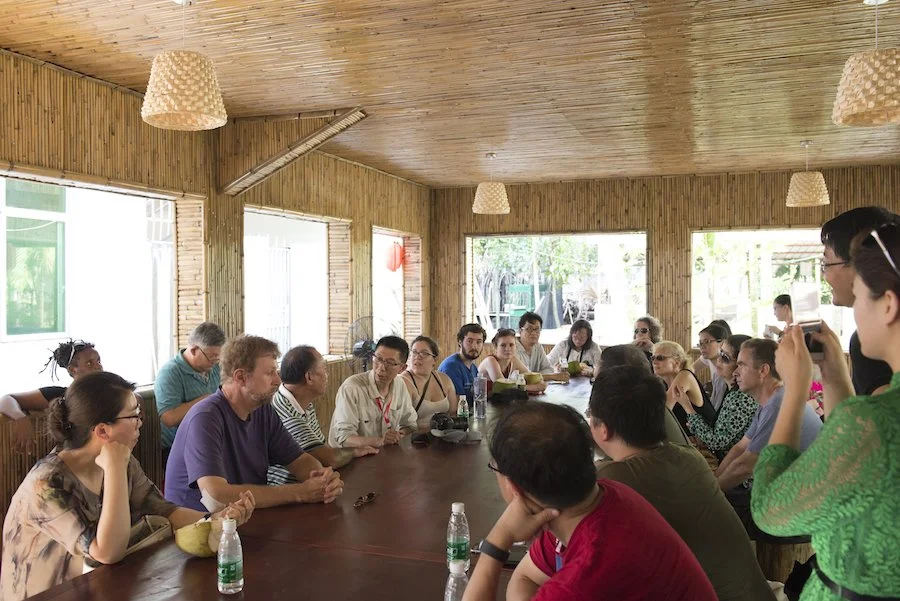9th Urban Space conference in Budapest 2018
This conference builds on previous conferences on urban space and social life and seeks to explore contested issues that link development to (tangible and intangible) heritage. New construction and developments in and between rural and urban regions affect the preservation and creation of heritage. Issues of gentrification, infrastructure improvement, population growth, (im)migration, shifting geopolitical-economic order such as Brexit, Visegrad Group (the Czech Republic, Hungary, Poland, and Slovakia) and so on create both contestation or conflict and social cohesion. As change and continuity in the built environment and natural heritage remain vibrant foci of research in the social sciences and humanities in terms of multi-and interdisciplinary engagement, this conference brings together scholars and practitioners to explore these relationships and connections as part of human development. Research papers, case studies, policy proposals, photo essays pertaining to these topics within the context of heritage are welcome.
The conference invites submissions on any topic that relates to development/social change, urban/rural space, social life from all disciplines.
8th Urban Space conference in Malaysia 2017
This conference seeks to illuminate and explore research and expressions of human mobility especially as related to cultural and social aspects. Papers pertaining to human mobility, refugee assistance, heritage formation and preservation (i.e., of both new and existing residents), social cohesion, borderlands issues, historical transformation and maintenance of social space, new community formation and other topics on transnational mobility(ies) would find a welcome audience at this conference. Papers need not follow a particular methodological orthodoxy and may focus on one or more regions of the world.
7th Urban Space conference in Hainan, China 2016
While 4C5M Studio’s 7th conference accepts papers on any topic that relates to urban space and social life, this year’s theme focuses on life course and aging in the context of built environment in both urban and rural settings. World Health Organization (WHO) has been advocating for global age-friendly cities since 2007. This conference welcomes papers to examine how cities in both developing and developed world fair in this unprecedented challenge. We encourage multi- and inter-disciplinary approaches to study life course and aging since aging does not start at 60 or 65. Life Course & the City aims at investigating the strong relationship between the quality of life for all ages and the quality of the city.
Why Hainan Island? As always, our conference chooses a venue/city that suits the theme best. Sanya is a beautiful city in Hainan Island. It is famous for its tropical climate and natural environment with spectacular sandy beaches. The island attracts international tourists and entertains “snow geese” in colder areas of China who spend the winter in this Hawaii like island. An exploratory tour of the city and facilities related to older population will be included in the conference.
6th Urban Space conference in HongKong 2015
The 6th Urban Space and Social Life conference invites papers that explore the relationship between city projects and identities. Projects in city include infrastructure (hardware), policies (software) and all things in between. Multi-dimensional identity includes, but is not limited to, cultural, ethnic, gender, class, and place identity. Case studies and theories in the form of papers and spatial designs which reflect the relationship between projects and identities from international scholars, professionals, business sector and government sectors will stimulate our understanding of and the practice of this important topic.
The conference locations provide an excellent platform to ponder our themes. The longest sea bridge in the world is now being built to connect Hong Kong-Zuhai-Macau by 2016. How will this project impact on Hong Kong’s cultural identity? After all, Hong Kong is about to become and “adult”. It will celebrate its 18th birthday in 2015 as a Special Administrative Region of China since it ceased to be a British colony in 1997. Yet its people are still struggling to adjust their contested cultural/place identity. And how does the bridge impact the lives of the people in these three cities? How does this development shape the contemporary Chinese cultural/place identity?
5th Urban Space conference in Greece 2014
The 5th Urban Space and Social Life conference invited papersthat explored challenging issues under the theme of City Development in Its Natural and Built Environment. City development’s challenge lies in how we sustain the quality of our livingwhile balancing the demandsof the natural and built environment. Often times, our city development creates undisputable “gridlocks” for ourselves. Challenges include but not limited to traffic, revitalization of old centers, balance use of spaces that intersect with natural forces such as natural disasters, geographic limitations (mountains, waters, and weather), and the return of wildlife. Our everyday living, culture, identity are shaped and impacted by the convolution of the natural and built environment. The conference invited the participants’ imagination and creativity to explore, understand, and solve some of the issues.
Athens, a city that gave birth to the western democracy, has a very unique and intriguing city development. The harbor in the South and the three mountains surrounding the city restrict its expansion. It is also challenged by the continuous population influx into the city and the religious practice that “informally” restricts the building height. The contemporary Athens is faced with tremendous challenges to develop a balanced and sustainable development with such given natural and built conditions. Athens was an ideal venue for the theme of our 5th conference. The conference ended with a wonderful city walk guided by Prof. Gregory Katsas.
4th Urban Space conference in Tongli, China 2013
4C5M Studio’s mission and the Tongji University initiative were designed to raise the intellectual and practicing consciousness on many urgent issues in rapid city re/development. In many city re/developmental projects, we investigated questions like what roles preservation played in re/creating warm and welcoming living environment for all walks of life? We also attempted to expand the concept of preservation thatwent beyond preserving a physical structure to include values, lifestyle, culture, and communities; the concept of hospitality beyond restaurant and hotel businesses to include the environment and design of the place which are welcoming and people -friendly.
Tongli, 11 miles from Suzhou, China, is a well-preserved water village with more than 1,000 years of history and culture. The conference will be held in a world heritage site, Tuisi Garden, a residential house inside the water village. In collaboration with College of Architecture and Urban Planning, Tongji University, Shanghai, China, the conference is organized by 4C5M Studio, hosted by Town of Tongli.
3rd Urban Space conference in Cixi, China 2012
The 3rd urban space and social life conference stressed the specific challenges of small to mid-size cities development. Our mission and the Cixi’s economic, social and cultural initiatives hoped to inspire collaboration among academia, professionals, artists, business sectors to investigate the concerns on the balance among economic development, social, and cultural life in a sustainable environment for smaller cities.
The conference offered an opportunity to 1) discuss an often neglected topic that is the booming development of smaller cities around the world due to global / national / local political-economy strategies, and responses from the grassroots; and 2) experience the rapid development of Cixi in person.
Cixi, China, is a vibrant and newly developed small city, two hours south of Shanghai. Cixi’s land has been claimed from cultivating salt fields along the coastline over the past thousandyear. Currently a population of around 2,000,000 consists of half locals and half migrant workers. Perhaps you may not know. Many of your large and small home electronic appliances are manufactured in this “richest” city in China. Within an area of 1,361 square kilometers, the city houses breathtaking mountains and lakes, conserved small villages, satellite cities, productive industrial parks, delicious berries (in June), archeological sites for the manufacture of porcelain, 5,000 bridges for a network of canals, the longest bridge in the world across Hangzhou Bay, and a wetland park.









